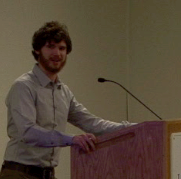James R Proctor
age ~78
from Melbourne Beach, FL
- Also known as:
-
- James M Proctor
- James D Proctor
- James R
James Proctor Phones & Addresses
- Melbourne Beach, FL
- 1118 Jade Dr, Bel Air, MD 21014 • 4435676812
- Melbourne Bch, FL
- 1118 Jade Dr, Bel Air, MD 21014 • 4107078956
Work
-
Position:Retired
Education
-
Degree:Graduate or professional degree
Lawyers & Attorneys

James Proctor - Lawyer
view sourceSpecialties:
Mediation
Commercial Real Estate
Financial Planning
Investments
Business Law
Bankruptcy
Commercial Real Estate
Financial Planning
Investments
Business Law
Bankruptcy
ISLN:
904300244
Admitted:
1966
University:
Princeton University, A.B., 1959
Law School:
Georgetown Law Center, J.D., 1966
Isbn (Books And Publications)




Writing Black Britain 1948-1998 : An Interdisciplinary Anthology
view sourceAuthor
James Proctor
ISBN #
0719053811
Name / Title
Company / Classification
Phones & Addresses
Chief Technology Officer
Widefi, Inc
Radiotelephone Communications
Radiotelephone Communications
1333 Gateway Dr, Melbourne, FL 32901
Execuhome Realty
Real Estate Agents and Managers
Real Estate Agents and Managers
8007 Corporate Dr Ste D, Baltimore, MD 21236
COO
Advance Realty, Inc.
Real Estate
Real Estate
8640 Ridgely''s Choice Dr. #201, Baltimore, MD 21236
Principal
Proctor Building and Remodeling, LLC
Single-Family House Construction
Single-Family House Construction
1185 Schucks Rd, Bel Air, MD 21015
Managing
Proctor Consulting, LLC
Business Consulting Services
Business Consulting Services
258 Seaview St, Melbourne, FL 32951
1680 N Riverside Dr, Melbourne, FL 32903
1680 N Riverside Dr, Melbourne, FL 32903
Manager
Riverside Technologies, LLC
Business Services at Non-Commercial Site
Business Services at Non-Commercial Site
1680 N Riverside Dr, Melbourne, FL 32903
Managing
Proxicom Wireless, LLC
Radiotelephone Communication
Radiotelephone Communication
258 Seaview St, Melbourne, FL 32951
1680 N Riverside Dr, Melbourne, FL 32903
1680 N Riverside Dr, Melbourne, FL 32903
Managing
Genesis Medical Devices, LLC
Health/Allied Services
Health/Allied Services
401 Ocean Ave, Melbourne, FL 32951
1680 N Riverside Dr, Melbourne, FL 32903
1680 N Riverside Dr, Melbourne, FL 32903
Us Patents
-
Dynamic Bandwidth Allocation For Multiple Access Communications Using Buffer Urgency Factor
view source -
US Patent:6388999, May 14, 2002
-
Filed:Jun 1, 1998
-
Appl. No.:09/088527
-
Inventors:Thomas E. Gorsuch - Indialantic FL
Carlo Amalfitano - Melbourne Beach FL
James A. Proctor - Indialantic FL -
Assignee:Tantivy Communications, Inc. - Melbourne FL
-
International Classification:H04L 1228
-
US Classification:370335, 370468, 370412
-
Abstract:A technique for providing high speed data service over standard wireless connections via an unique integration of protocols and existing cellular signaling, such as is available with Code Division Multiple Access (CDMA) type systems through more efficient allocation of access to CDMA channels. For example, when more users exist than channels, the invention determines a set of probabilities for which users will require channel access at which times, and dynamically assigns channel resources accordingly. Channel resources are allocated according to a buffer monitoring scheme provided on forward and reverse links between a base station and multiple subscriber units. Each buffer is monitored over time for threshold levels of data to be transmitted in that buffer. For each buffer, a probability is calculated that indicates how often the specific buffer will need to transmit data and how much data will be transmitted. This probability takes into account the arrival rates of data into the buffer, as well as which thresholds within the buffer are exceeded, as well as which resources in the form of channels are already allocated to the subscriber unit.
-
Method For Searching Pilot Signals To Synchronize A Cdma Receiver With An Associated Transmitter
view source -
US Patent:7233627, Jun 19, 2007
-
Filed:Feb 20, 2001
-
Appl. No.:09/789476
-
Inventors:James A. Proctor - Indialantic FL, US
Antoine J. Rouphael - Escondido CA, US
John E. Hoffmann - Indialantic FL, US -
Assignee:IPR Licensing, Inc. - Wilmington DE
-
International Classification:H04B 7/02
-
US Classification:375267, 375130, 375299, 375347, 370342, 370320, 343834, 343833, 343757, 343754, 342368, 342375, 4555621, 455561, 455133, 455 69
-
Abstract:A method for synchronizing a CDMA receiver to a transmitter when an adaptive antenna is utilized to receive transmitted data, wherein a receiving antenna system is adapted between a 360 reception angle pattern (i. e. , an omni-directional pattern) and a fixed reception angle (i. e. , a directional pattern) by permitting the receiver to identify a pilot signal having the largest magnitude. The receiver minimizes interference from other pilot signals by steering antenna pattern nulls toward other transmitters. As a result, the time required for the receiver to acquire a valid pilot signal is significantly reduced.
-
Aperiodic Array Antenna
view source -
US Patent:7463201, Dec 9, 2008
-
Filed:Feb 13, 2007
-
Appl. No.:11/706544
-
Inventors:Bing Chiang - Melbourne FL, US
Griffin K. Gothard - Satellite Beach FL, US
Christopher A. Snyder - Melbourne FL, US
William R. Palmer - Melbourne FL, US
Michael J. Lynch - Merritt Island FL, US
Thomas E. Gorsuch - Indialantic FL, US
Kenneth M. Gainey - Satellite Beach FL, US
James A. Proctor - Melbourne Beach FL, US -
Assignee:InterDigital Corporation - Wilmington DE
-
International Classification:H01Q 1/24
-
US Classification:343702, 343833, 343834
-
Abstract:A wireless handset including an antenna array. The antenna array includes an active antenna element and two passive antenna elements. The active and passive antenna elements are arranged to form a triangle with a vertex. The vertex includes a vertex angle and the active antenna element is disposed at the vertex. The vertex angle is between 90 degrees and 180 degrees.
-
Variable Rate Coding For Enabling High Performance Communication
view source -
US Patent:7826437, Nov 2, 2010
-
Filed:Sep 21, 2009
-
Appl. No.:12/563466
-
Inventors:Dennis D. Ferguson - Satellite Beach FL, US
James A. Proctor - Indialantic FL, US -
Assignee:IPR Licensing, Inc. - Wilmington DE
-
International Classification:H04B 7/216
H04J 3/16 -
US Classification:370342, 370469, 370474
-
Abstract:A protocol for optimizing the use of coded transmissions such as over wireless links. In this technique, interframes are split into segments selected to be an optimum size according to transmission characteristics of the radio channel. The inverse process is applied at the receiver. Using this scheme, segments containing erroneous data may be present.
-
Use Of Orthogonal Or Near Orthogonal Codes In Reverse Link
view source -
US Patent:8259744, Sep 4, 2012
-
Filed:Apr 30, 2009
-
Appl. No.:12/433309
-
Inventors:James A. Proctor - Indialantic FL, US
Pertti O. Alapuranen - Indialantic FL, US -
Assignee:IPR Licensing, Inc. - Wilmington DE
-
International Classification:H04B 7/216
-
US Classification:370441, 370208, 370335
-
Abstract:An apparatus for use with a shared access communication channel is disclosed. The chipping rate of a first group of terminals is determined. Transmissions on the shared access communication channel are encoded using first pseudorandom noise (PN) code and a phase shift at the first chipping rate and an orthogonal spreading code having a chipping rate less than the first chipping rate. The apparatus may receive a feedback channel assignment and may receive an indication of a change in timing on the assigned feedback channel.
-
Wireless Local Area Network Repeater
view source -
US Patent:8498234, Jul 30, 2013
-
Filed:Jun 11, 2003
-
Appl. No.:10/516327
-
Inventors:James A. Proctor - Melbourne Beach FL, US
Kenneth M. Gainey - Satellite Beach FL, US -
Assignee:QUALCOMM Incorporated - San Diego CA
-
International Classification:H04B 7/10
-
US Classification:370315, 370279
-
Abstract:A repeater () facilitates wireless communication between a first communication device () and a second communication device () in a wireless network using a time division duplex protocol for data transmission. The repeater () includes a receiver () for receiving a signal on either of at least two bi-directional communication frequencies simultaneously. A signal detector () is operatively coupled to the receiver () for determining if the signal is present on at least one of the two bi-directional frequencies. A frequency converter () is for converting the signal present on one of the bi-directional frequencies to a converted signal on the other of the bi-directional frequencies. A transmitter () is for transmitting the converted signal on the other of said bi-directional frequencies.
-
Fast Acquisition Of Traffic Channels For A Highly Variable Data Rate Reverse Link Of A Cdma Wireless Communication System
view source -
US Patent:20010002904, Jun 7, 2001
-
Filed:Dec 5, 2000
-
Appl. No.:09/730376
-
Inventors:James Proctor - Indialantic FL, US
-
Assignee:Tantivy Communications, Inc. - Melbourne FL
-
International Classification:H04J003/16
H04J003/22 -
US Classification:370/335000, 370/468000, 370/441000, 370/479000
-
Abstract:A service option overlay for a CDMA wireless communication in which multiple allocatable subchannels are defined on a reverse link by assigning different code phases of a given long pseudonoise (PN) code to each subchannel. The instantaneous bandwidth needs of each on-line subscriber unit are then met by dynamically allocating none, one, or multiple subchannels on an as needed basis for each network layer connection. The system efficiently provides a relatively large number of virtual physical connections between the subscriber units and the base stations on the reverse link for extended idle periods such as when computers connected to the subscriber units are powered on, but not presently actively sending or receiving data. These maintenance subchannels permit the base station and the subscriber units to remain in phase and time synchronism. This in turn allows fast acquisition of additional subchannels as needed by allocating new code phase subchannels. Preferably, the code phases of the new channels are assigned according to a predetermined code phase relationship with respect to the code phase of the corresponding maintenance subchannel.
-
Method And Apparatus For Adapting Antenna Array To Reduce Adaptation Time While Increasing Array Performance
view source -
US Patent:20010020915, Sep 13, 2001
-
Filed:Feb 2, 2001
-
Appl. No.:09/776558
-
Inventors:James Proctor - Indialantic FL, US
-
International Classification:H01Q003/22
-
US Classification:342/372000
-
Abstract:An antenna apparatus that can increase capacity in a cellular communication system is disclosed. The antenna operates in conjunction with a mobile subscriber unit and comprises a plurality of antenna elements, each coupled to a respective weight control component to provide a weight to the signal transmitted from (or received by) each element. The weight for each antenna element is adjusted to achieve optimum reception during, for example, an idle mode when a pilot signal is received. The antenna array creates a beam former for signals to be transmitted from the mobile subscriber unit, and a directional receiving array to more optimally detect and receive signals transmitted from the base station. By directionally receiving and transmitting signals, multipath fading and intercell interference are greatly reduced. The weights are adjusted in a coarse and a fine mode. In the coarse mode all the weight control components are jointly adjusted or changed so that the antenna beam scans through a predetermined sector of a circle until a signal quality metric of the received signal is optimized. The coarse adjustment mode is followed by a fine adjustment mode during which the weights of are independently adjusted to further optimize the signal quality metric.
License Records
James W Proctor
License #:
RS055605A - Expired
Category:
Real Estate Commission
Type:
Real Estate Salesperson-Standard
Resumes

James Proctor Baltimore, MD
view sourceWork:
Southland Industries
Baltimore, MD
Aug 2008 to Nov 2011
CADD Support Coordinator John Ammon & Associates
Baltimore, MD
May 2005 to Jul 2008
Architectural Draftsman Workforce Technology Center
Baltimore, MD
Jul 2004 to May 2005
CAD Training Sheldon & Sons
Owings Mills, MD
Apr 2003 to Jun 2004
Custom Finisher/Painter Park Rug & Floor Coverings
Chestertown, MD
Jul 1997 to Oct 2002
Flooring Technician Moffett Construction
Chestertown, MD
May 1995 to Jul 1997
Carpenter, MHIC Contractor JP Design
Baltimore, MD
Oct 1990 to Dec 1994
Independent MHIC Contractor JP Design
Baltimore, MD
Oct 1990 to Mar 1993
Drafter and Chainman Johns Hopkins School of Medicine
Baltimore, MD
Dec 1978 to Oct 1990
Audio-Visual Systems Technician
Baltimore, MD
Aug 2008 to Nov 2011
CADD Support Coordinator John Ammon & Associates
Baltimore, MD
May 2005 to Jul 2008
Architectural Draftsman Workforce Technology Center
Baltimore, MD
Jul 2004 to May 2005
CAD Training Sheldon & Sons
Owings Mills, MD
Apr 2003 to Jun 2004
Custom Finisher/Painter Park Rug & Floor Coverings
Chestertown, MD
Jul 1997 to Oct 2002
Flooring Technician Moffett Construction
Chestertown, MD
May 1995 to Jul 1997
Carpenter, MHIC Contractor JP Design
Baltimore, MD
Oct 1990 to Dec 1994
Independent MHIC Contractor JP Design
Baltimore, MD
Oct 1990 to Mar 1993
Drafter and Chainman Johns Hopkins School of Medicine
Baltimore, MD
Dec 1978 to Oct 1990
Audio-Visual Systems Technician
Education:
Workforce Technology Center
Baltimore, MD
Jan 2004 to Jan 2005
Certificate in Autocad Boy's Latin School
Baltimore, MD
Jan 1974 to Jan 1978
High School Diploma in General Studies
Baltimore, MD
Jan 2004 to Jan 2005
Certificate in Autocad Boy's Latin School
Baltimore, MD
Jan 1974 to Jan 1978
High School Diploma in General Studies
Skills:
Broad Construction Knowledge, Drafting, Project Management, Detail Oriented
Medicine Doctors

James B. Proctor
view sourceSpecialties:
Cardiovascular Disease
Work:
Cardiology ConsultantsCardiology Consultants PC
701 University Blvd E STE 400, Tuscaloosa, AL 35401
2057520694 (phone), 2057526244 (fax)
701 University Blvd E STE 400, Tuscaloosa, AL 35401
2057520694 (phone), 2057526244 (fax)
Education:
Medical School
University of South Alabama College of Medicine
Graduated: 2006
University of South Alabama College of Medicine
Graduated: 2006
Languages:
English
Description:
Dr. Proctor graduated from the University of South Alabama College of Medicine in 2006. He works in Tuscaloosa, AL and specializes in Cardiovascular Disease. Dr. Proctor is affiliated with DCH Regional Medical Center.
Plaxo

James Proctor
view sourceReno, NevadaDirector-Forensic Accounting at Meridian Business...

james proctor
view sourcelaw offices of James Proctor

james proctor
view sourcefire fighter III at p g fire dept.

James Proctor
view sourceUK
Classmates

James Walton (Proctor)
view sourceSchools:
Willow Spring Elementary School Woodland CA 1985-1986, Douglass Junior High School Woodland CA 1987-1989, Gibson Elementary School Woodland CA 1987-1994
Community:
Candi Smith, Ruth Kreulen, Mike Falvey, Stevie Gastineau

James Proctor Jp ...
view sourceSchools:
Versailles High School Versailles KY 1981-1985
Community:
Wilma Crawford, Pat Gaunce, Robert Southworth, Pamela Hoban
Biography:
Life
From 85 thru 87 army airborn fort campbell.then to Devry university for buisne...

James Proctor
view sourceSchools:
Maryland School for the Deaf Frederick MD 1967-1971
Community:
Celeste Boswell, Bonnie Bohrer

James Proctor
view sourceSchools:
Rothesay Regional High School Rothesay NB 1970-1974
Community:
Raymond Burhoe, Jean Pearson, Colleen Burhoe, Michael Barker, June Bull

James H. Proctor
view sourceSchools:
Parke Elementary School Detroit MI 1951-1957, Burroughs Junior High School Detroit MI 1958-1961, Trombly Adult Trade High School Detroit MI 1961-1963
Community:
Nicole O'neill, Serena Morris, Joan Taylor, Chaka Hester

James Proctor
view sourceSchools:
Dyer Elementary School South Portland ME 1992-1994, Manchester Elementary School Windham ME 1996-1996, Longfellow Elementary School Portland ME 1997-1997, Nathan Clifford Elementary School Portland ME 1997-1997, Lincoln Middle School Portland ME 1997-2000
Community:
Cheryl Burns, Jeanne Eastman

James Proctor
view sourceSchools:
St. Thomas Aquinas High School New Britain CT 1988-1992
Community:
Valerie Yankauskas, Thomas Busse, Joan Pilz, Edward Piatek

James Proctor
view sourceSchools:
Wootton High School Rockville MD 1974-1978
Community:
Wayne Eisenberg

Martyn James Proctor
view source
James Sylvia Proctor
view source
James D. Proctor
view source
James Jc Proctor
view source
James Joshua Proctor
view source
Phillip James Proctor
view source
James Gerald Proctor
view source
James Cody Proctor
view sourceGoogleplus

James Proctor
Work:
Supporters Direct in Scotland - Development Manager

James Proctor

James Proctor

James Proctor

James Proctor

James Proctor

James Proctor

James Proctor
Youtube
Myspace
Flickr
Get Report for James R Proctor from Melbourne Beach, FL, age ~78





















